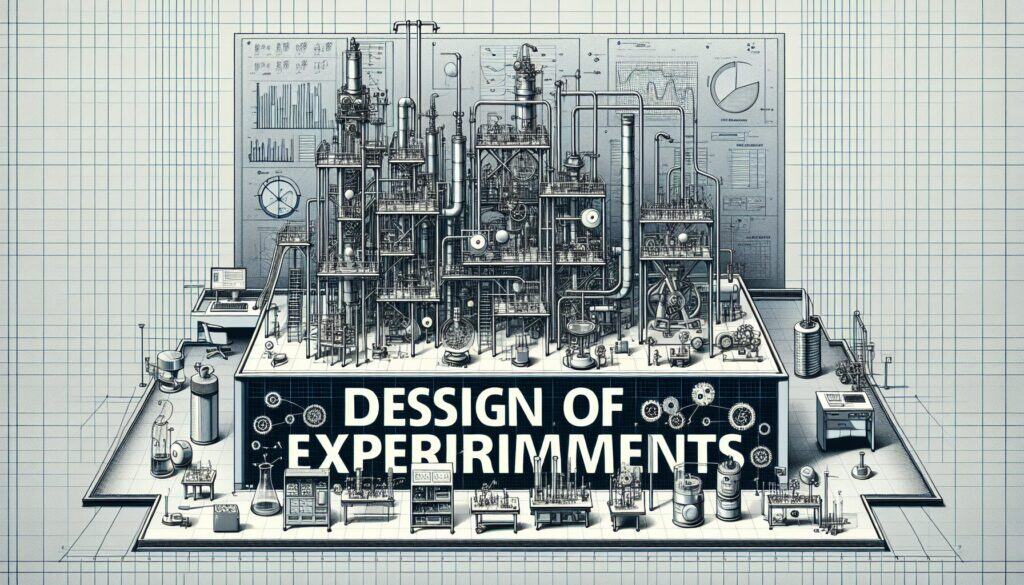Una metodologia statistica sistematica per determinare la relazione tra i fattori che influenzano un processo o un prodotto e l'output di tale processo o prodotto, apportando modifiche pianificate alle variabili di input e osservando gli effetti sulle variabili di output.
- Metodologie: Ingegneria, Qualità
Progettazione di esperimenti (DOE)

Progettazione di esperimenti (DOE)
- Analisi della varianza (ANOVA), Miglioramento continuo, Progettazione per Sei Sigma (DfSS), Ottimizzazione del design, Miglioramento dei processi, Controllo di qualità, Gestione della qualità, Analisi statistica
Obiettivo:
Come si usa:
- Comporta la pianificazione di un esperimento in cui più fattori di input (variabili) vengono modificati in modo mirato e strutturato per osservare i loro effetti individuali e interattivi su un output (risposta). L'analisi statistica viene quindi utilizzata per identificare i fattori significativi e le impostazioni ottimali.
Professionisti
- Consente di studiare più fattori contemporaneamente, rendendolo efficiente; può identificare le interazioni tra i fattori; aiuta a ottimizzare i processi e i progetti di prodotto per ottenere i risultati desiderati; fornisce conclusioni statisticamente valide.
Contro
- Può essere complesso da progettare e analizzare, richiedendo spesso software statistico e competenze specifiche; può richiedere un numero significativo di prove sperimentali, che possono essere costose o richiedere molto tempo; presuppone che tutti i fattori importanti siano stati identificati.
Categorie:
- Ingegneria, Lean Sigma, Produzione, Risoluzione dei problemi, Progettazione del prodotto, Qualità
Ideale per:
- Indagine sistematica sugli effetti di più variabili su un processo o un prodotto per ottimizzare le prestazioni, risolvere i problemi o migliorare i progetti.
La metodologia del Design of Experiments (DOE) è spesso applicata in settori come quello farmaceutico, manifatturiero e agricolo, dove l'ottimizzazione dei processi è fondamentale per il successo. Nel settore farmaceutico, il DOE può essere impiegato negli studi di formulazione per capire come le variazioni delle concentrazioni degli ingredienti influiscano sull'efficacia e sulla stabilità dei farmaci, accelerando così i cicli di sviluppo. Nel settore manifatturiero, le organizzazioni utilizzano il DOE durante la fase di progettazione del prodotto per valutare in che modo le modifiche alle impostazioni delle macchine influiscono sulla qualità del prodotto, guidando i miglioramenti che riducono gli sprechi e le rilavorazioni. Gli scienziati agrari utilizzano il DOE per valutare come fattori quali il tipo di suolo, l'acqua e le condizioni dei fertilizzanti influenzino la resa delle colture, fornendo dati fondamentali per migliorare le pratiche agricole. Questa metodologia è particolarmente vantaggiosa nei contesti di ricerca e sviluppo, dove team composti da ingegneri, scienziati e responsabili di prodotto si riuniscono per progettare esperimenti che analizzano più variabili contemporaneamente, rivelando interazioni intricate che gli studi su una singola variabile potrebbero trascurare. Richiede un approccio strutturato alla pianificazione e all'esecuzione, che richiede la collaborazione tra le parti interessate per determinare quali fattori indagare, assicurando che l'esperimento sia in linea con gli obiettivi del progetto. L'analisi statistica successiva alla fase sperimentale consente ai team di interpretare i risultati con sicurezza, portando a decisioni ben informate che ottimizzano le prestazioni del prodotto o l'efficienza del processo sulla base di prove solide piuttosto che di esperienze aneddotiche. Grazie a un'attenta pianificazione, il DOE si distingue come un potente strumento di indagine sistematica, che offre un percorso chiaro per l'innovazione e il miglioramento in vari settori.
Fasi chiave di questa metodologia
- Identificare gli obiettivi e le variabili di risposta dell'esperimento.
- Selezionare i fattori di input e i loro livelli da analizzare.
- Scegliere il disegno sperimentale appropriato (ad esempio, fattoriale completo, fattoriale frazionario, metodo della superficie di risposta).
- Randomizzare l'ordine di esecuzione per ridurre al minimo le distorsioni.
- Condurre gli esperimenti come da progetto.
- Analizzare i dati utilizzando metodi statistici (ad esempio, ANOVA).
- Interpretare i risultati per identificare i fattori significativi e le interazioni.
- Ottimizzare le impostazioni per ottenere i risultati desiderati.
Suggerimenti per i professionisti
- Usare disegni fattoriali frazionali quando si ha a che fare con un gran numero di variabili per ridurre il numero totale di esperimenti pur ottenendo informazioni utili sugli effetti principali e sulle interazioni.
- Incorporare la randomizzazione nelle prove sperimentali per ridurre al minimo le distorsioni e migliorare la validità dei risultati eliminando gli errori sistematici dovuti a fattori non controllati.
- Analizzare i residui del modello per verificare la presenza di varianze non costanti e di outlier, assicurandosi che le ipotesi del modello siano rispettate. test statistici sono soddisfatte per ottenere conclusioni affidabili.
Leggere e confrontare diverse metodologie, raccomandiamo il
> Ampio archivio di metodologie <
insieme ad altre 400 metodologie.
I vostri commenti su questa metodologia o ulteriori informazioni sono benvenuti su sezione commenti qui sotto ↓ , così come tutte le idee o i link relativi all'ingegneria.
Contesto storico
1949
1950
1950
1960
1960
1960
1960
1940
1950
1950
1958
1960
1960
1960
1960
(se la data non è nota o non è rilevante, ad esempio "meccanica dei fluidi", viene fornita una stima approssimativa della sua notevole comparsa)















Post correlati
Calcolatore da METS a calorie
Meta-analisi
Mappatura dei messaggi
Diagrammi del modello mentale
Forze di spinta e di trazione massime accettabili
Pianificazione dei fabbisogni di materiale (MRP)